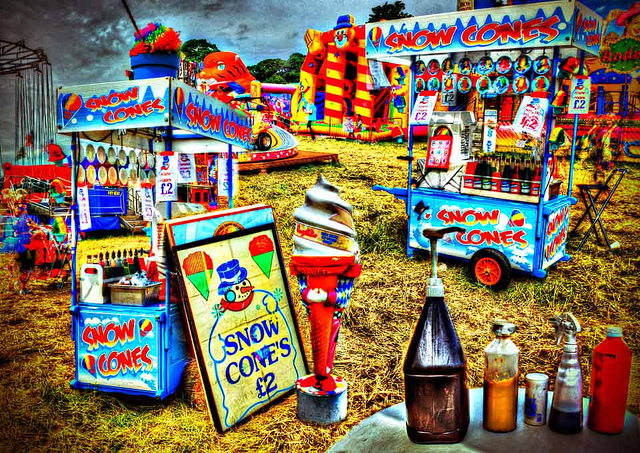Chapter 12: Narrative Writing
Introduction to Chapter 12

Reflect for a moment on the last memorable story you heard, told, or read. What made the story remain with you? Was it a compelling character or participant in the action? An interesting set of circumstances? Was it told in an amusing or serious manner, and did it make you react emotionally?
Everyone loves a good story, and each day we seek out good stories in a variety of media: novels, short stories, newspapers, works of fine art, blogs, even notes and posts on social media pages.
Narration is the art of storytelling, and in this chapter, you will investigate the ways in which writers employ common narration strategies to engage readers from the beginning to the end of a significant event.
12.1 The Purpose of Narrative Writing
Narration means the art of storytelling, and the purpose of narrative writing is to tell stories. Any time you tell a story to a friend or family member about an event or incident in your day, you engage in a form of narration. In addition, a narrative can be factual or fictional. A factual story is one that is based on, and tries to be faithful to, actual events as they unfolded in real life. A fictional story is a made-up, or imagined, story; the writer of a fictional story can create characters and events as he or she sees fit.
The big distinction between factual and fictional narratives is based on a writer’s purpose. The writers of factual stories try to recount events as they actually happened, but writers of fictional stories can depart from real people and events because the writers’ intents are not to retell a real-life event. Biographies and memoirs are examples of factual stories, whereas novels and short stories are examples of fictional stories.
Most likely, if you are assigned narrative writing in your reading and writing course, you will be asked to write a factual narrative based on your own experiences. You will choose specific places, people, and events to illustrate your true personal story. Narrative writing tries to relay a series of events in an emotionally engaging way. You want your audience to be moved by your story, which could mean through laughter, sympathy, fear, anger, and so on. The more clearly you tell your story, the more emotionally engaged your audience is likely to be.
12.2 The Structure anD components of a Narrative Essay
Major narrative events are most often conveyed in chronological order, the order in which events unfold from first to last. Stories typically have a beginning, a middle, and an end, and these events are typically organized by time. Certain transitional words and phrases aid in keeping the reader oriented in the sequencing of a story. Some of these phrases are listed here:
Chronological Transitional Words
| after/afterward | as soon as | at last | before |
| currently | during | eventually | meanwhile |
| next | now | since | soon |
| finally | later | still | then |
| until | when/whenever | while | first, second, third |
Other basic components of a narrative are:
- Plot – The events as they unfold in sequence.
- Characters – The people who inhabit the story and move it forward. Typically, there are minor characters and main characters. The minor characters generally play supporting roles to the main character, also known as the protagonist.
- Conflict – The primary problem or obstacle that unfolds in the plot that the protagonist must solve or overcome by the end of the narrative. The way in which the protagonist resolves the conflict of the plot results in the theme of the narrative.
- Theme – The ultimate message the narrative is trying to express; it can be either explicit or implicit.
12.3 Writing a Narrative Essay
When writing a narrative essay, start by determining if you will be writing a factual or fictional story. Then freewrite, brainstorm, or create a mindmap about topics that are of general interest to you.
Once you have a general idea of what you will be writing about, you should sketch out the major events of the story that will compose your plot. Typically, these events will be revealed chronologically and climax at a central conflict that must be resolved by the end of the story. The use of strong details is crucial as you describe the events and characters in your narrative. You want the reader to emotionally engage with the world that you create in writing.
12.4 Use Descriptive Writing
To create strong details, keep the human senses in mind. You want your reader to be immersed in the world that you create, so focus on details related to sight, sound, smell, taste, and touch as you describe people, places, and events in your narrative.
As always, it is important to start with a strong introduction to hook your reader into wanting to read more. Try opening the essay with an event that is interesting to introduce the story and get it going. Finally, your conclusion should help resolve the central conflict of the story and impress upon your reader the ultimate theme of the piece.
Check Your Understanding 12.4: Keep the Senses in Mind
Imagine that you are standing in one of the places in the images below. Write a paragraph that describes the place. Use the five senses to include descriptive details. Use these questions to help you:
- What would you see in this place?
- What types of scents might you smell?
- What types of sounds might you hear?
- What would it feel like to be in this place?
Image 1: Snow Cone Corner by Sam Leighton (via Flickr Creative Commons 2.0 License)

Image 2: Forest Light by Neil Roger (via Flickr Creative Commons 2.0 License)

Go to the end of this chapter to the section “Answers for the Check Your Understanding Activities” to read more.
Narratives Tell a Story
Every day, you relate stories to other people through simple exchanges. You may have had a horrible experience at a restaurant the night before, or you may have had some good news you are ready to share. In each one of these experiences there is a story, and when you begin to share a personal experience, you often communicate in a narrative mode.
Although narratives can vary widely, most share several common features. Generally, storytellers establish:
- Characters, the person/people (sometimes they are animals) the story is about, which may include the storyteller
- Conflict, or struggle in the story, that builds their audience’s interest
- Details, or descriptions, that appeal to the senses of sight, sound, smell, touch, and taste
- A sequence of events in a plot, or order of what happens in the story, that keeps the audience engaged as the story unfolds
- Reflection of events around a theme, or unifying idea, for telling the story
12.5 Key Takeaways
- Narration is the art of storytelling.
- Narratives can be either factual or fictional. In either case, narratives should emotionally engage the reader.
- Most narratives are composed of major events sequenced in chronological order.
- Time transition words and phrases are used to orient the reader in the sequence of a narrative.
- The four basic components to all narratives are plot, character, conflict, and theme.
- The use of sensory details is crucial to emotionally engaging the reader.
- A strong introduction is important to hook the reader. A strong conclusion should add resolution to the conflict and evoke the narrative’s theme.
12.6 Sample Narratives
Select the drop-down boxes to read sample narrative essays written by college students.
Answers for the Check Your Understanding Activities
12.4: Keep the Senses in Mind
There are no right or wrong answers for this activity. The goal is just to practice descriptive writing. You might share your paragraph with a friend or family member and ask for feedback. Descriptive writing takes practice, so keep practicing!
Licenses and Attributions
CC Licensed Content, Shared Previously:
- Introduction to chapter 12 was adapted from Introduction to Narrative Essay by Lumen Learning, license: CC BY: Attribution;
- Sections 12.1 to 12.5 were adapted from Successful Writing, provided by an anonymous author, license: CC BY-NC-SA: Attribution-NonCommercial-ShareAlike;
- Section 12.6 includes the following sample narratives:
- “You’ve Gotta Try This!” by Victoria Ferguson, license: CC BY: Attribution;
- “Don’t Wait for People to Tell You How Great You Are” by Rachell Plucknet, license: CC BY: Attribution“
